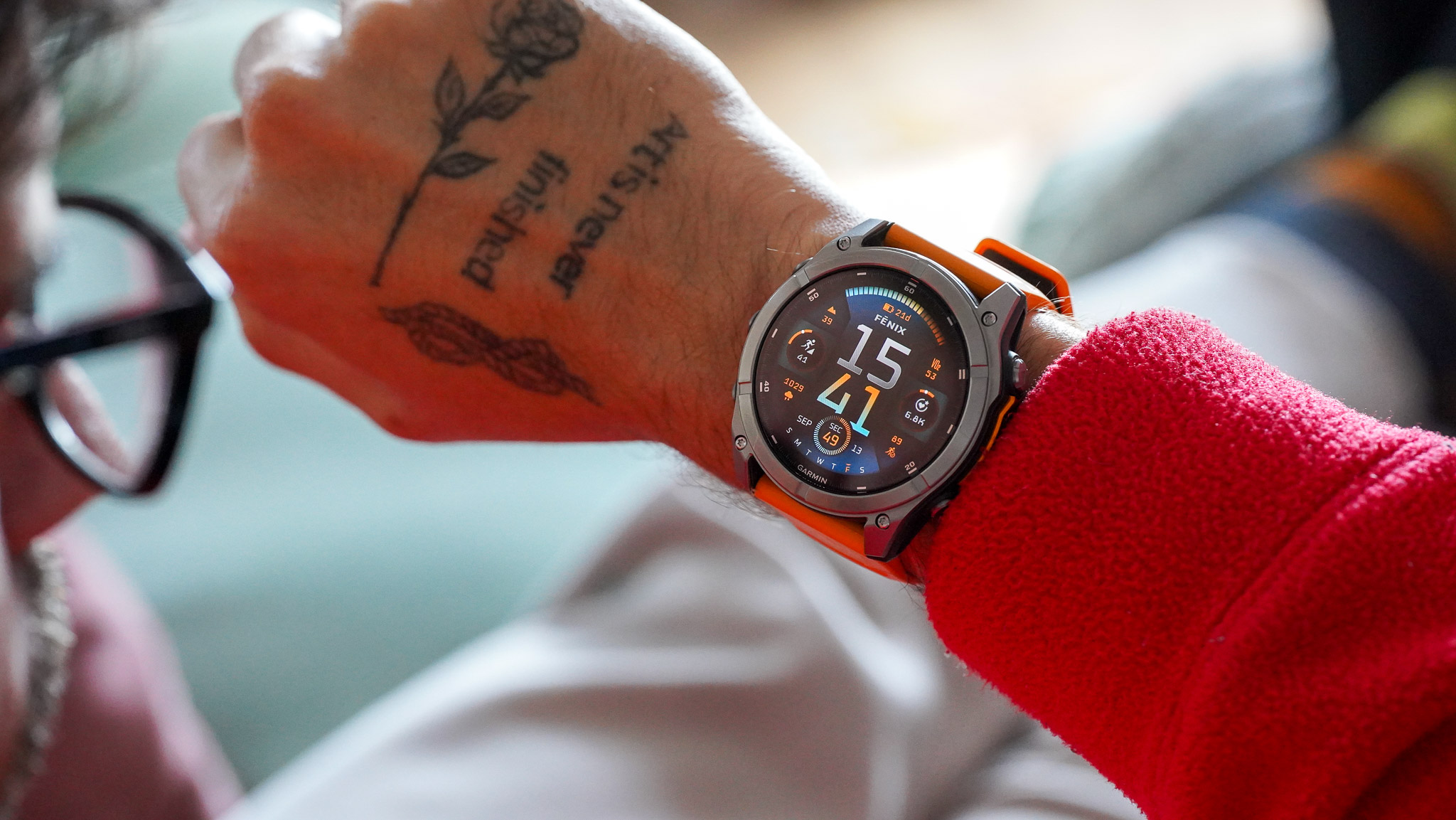
The Garmin Fenix 8 ushers in a new era for the fan-favourite rugged smartwatch franchise by introducing an AMOLED screen, effectively making the Epix franchise obsolete. Of course, there is a lot more going for it than just a bright display, which is why writing a review always takes forever.
I’m not complaining, though. I have a long, affectionate history with the Fenix, admittedly the best Garmin watch out there. It’s a fantastic wearable that showcases what Garmin is capable of in terms of smartwatch technology. Not to mention, it retains value better than most other smart wearables.
Battery life is also generally exceptional, as are the mapping and exercise tracking features. In short, the Fenix is the ultimate outdoor watch that doesn’t care about whether you’re an iPhone or Android user.
The eighth iteration is exciting, even though it doesn’t switch things up much compared to the Garmin Fenix 7 Pro. Sure, there’s the new display and some refinements to core features, but is it worth the upgrade? How does it compare to other rugged smartwatches that suddenly flooded the market in recent years? Let’s find out.
Garmin Fenix 8 review
Price and availability
The Garmin Fenix 8 was announced in August 2024 and is available to buy now directly from Garmin US, Garmin UK and Garmin AU. Pricing varies based on model size, material, and display type, offering different configurations for different needs.
In the US, the base 43mm AMOLED version starts at approximately $999.99. The larger 47mm and 51mm models, which can come with either an AMOLED or a memory-in-pixel (MIP) display featuring solar charging, range from $1,099.99 to $1,299.99, with options like titanium bezels and sapphire glass increasing the cost.
In the UK, the 43mm AMOLED variant begins at £869.99. The prices for the larger versions, which offer a choice of upgraded materials like sapphire glass and solar-powered MIP screens, typically range from £949.99 to £1,149.99.
For Australia, the 43mm AMOLED model starts at AU$1,699. Larger sizes, with additional features such as solar charging or premium materials like titanium, are priced between AU$1,799 and AU$2,099, depending on the specific configuration.
There is a significant price bump compared to older Fenix models, mainly due to the lack of non-solar harvesting non-AMOLED options.
Specifications
Design and build quality
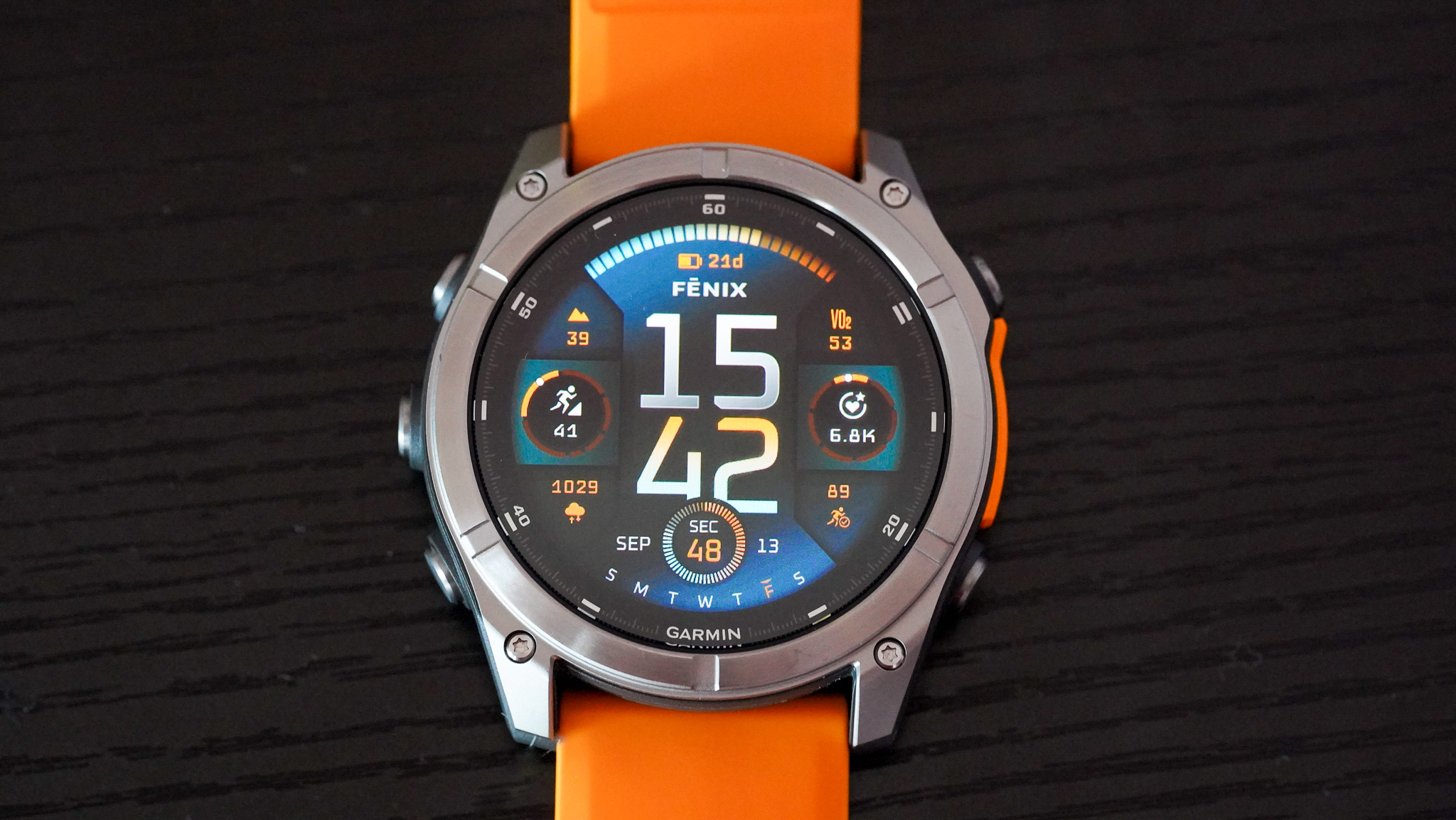
The Fenix 8 maintains Garmin’s tradition of rugged construction, featuring a reinforced polymer case with a metal rear cover, similar to the Fenix 7 Pro. It offers premium options, including titanium bezels and sapphire crystal glass, which improve both durability and scratch resistance.
Display
A significant upgrade in the Fenix 8 is the AMOLED display, which is available alongside the traditional MIP (memory-in-pixel) display that was standard in the Fenix 7 Pro. The AMOLED version provides much brighter and more vibrant visuals, with improved contrast and visibility, even in direct sunlight. This enhancement is particularly noticeable in day-to-day use and for viewing maps and workout data.
AMOLED screens are controversial among Fenix users. Even Jon Hosler, Lead Product Manager at Garmin, admitted it during an interview I had with him: “At first, we were a bit nervous about the transition to AMOLED displays because we didn’t want to confuse or alienate our core Fenix customers who loved the memory-in-pixel (MIP) solar displays.”
Some users swear by the MIP display, saying that it saves battery life and feels less jarring than AMOLED. The sad news for these guys is that the wearable industry is moving towards AMOLED, with companies like Apple adding AMOLED screens to their watches that can refresh once a second instead of just once a minute.
Garmin has always been keen on providing long battery life on its watches, and seemingly adding an AMOLED screen doesn’t impact it too much, so why shouldn’t they? I, for one, enjoy the added visibility, although the maximum brightness isn’t on par with watches such as the Apple Watch Ultra 2 or the Samsung Galaxy Watch Ultra.
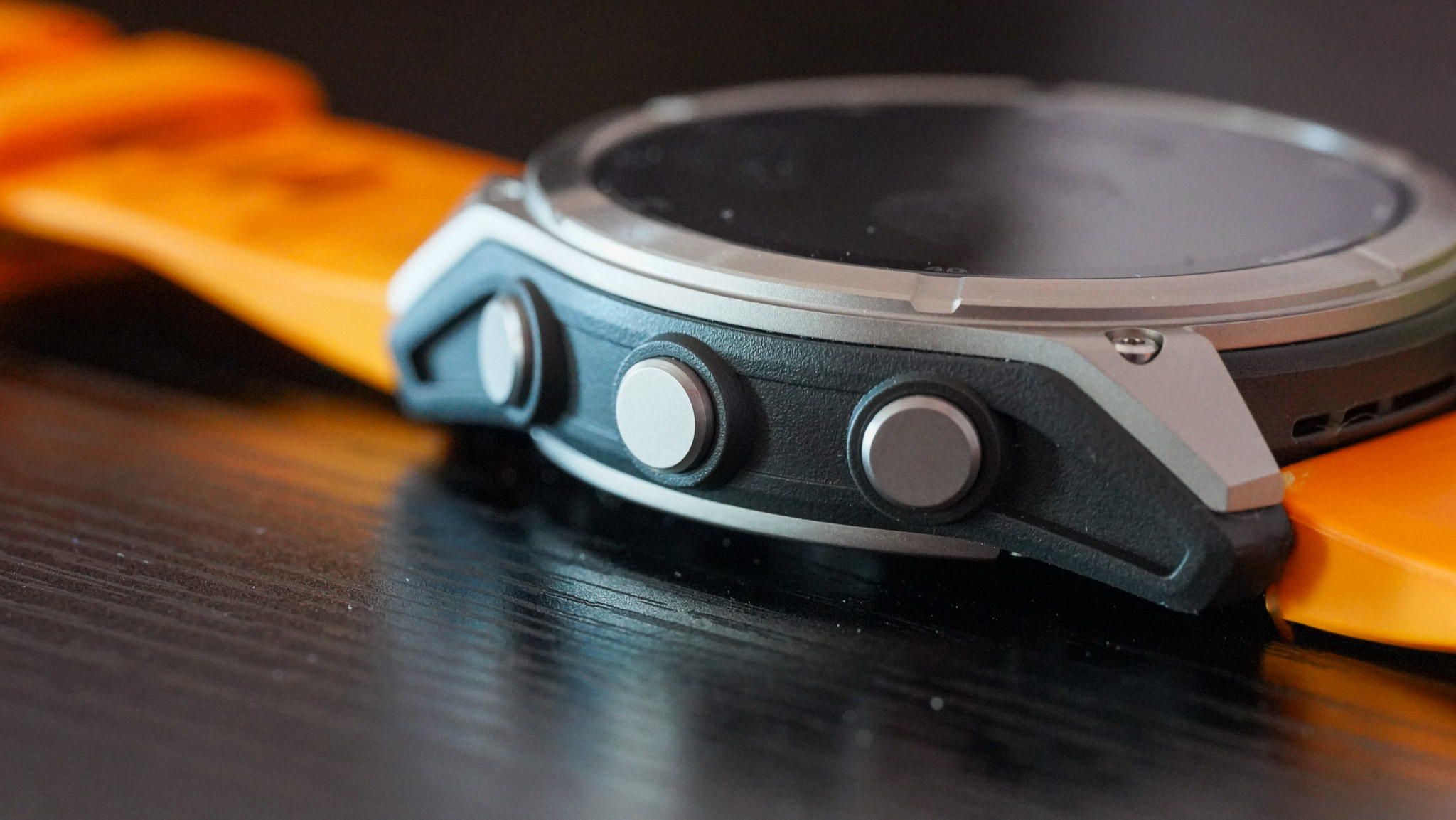
Diving and leakproof buttons
Speaking of those two, it’s hard not to see the influence of these somewhat more casual multisport watches on the Fenix line. Nowhere is this more apparent than the added diving functionality and the leakproof buttons, both new to the Fenix 8.
The Fenix 8 supports diving up to 40 meters with certified dive modes, offering scuba divers detailed metrics such as depth and GPS-based entry/exit points. Garmin already has diving watches used by pros (the Descent series), so adding dicing functionality seems like an answer to Apple and Samsung's emphasis on this feature on their wearables.
Garmin hasn’t gone as far as adding a dive widget on the watch, but you can definitely use it for diving, which makes sense for something as rugged as the Fenix 8. I can see people using it for diving; however, just like in the case of Apple and Samsung, I doubt this is a feature that the majority of the users utilise on a daily basis.
Sizes
The Fenix 8 is available in multiple sizes: 43mm, 47mm, and 51mm. However, the new generation has streamlined design touches, such as reorganised menus and more intuitive touchscreen interfaces. The Fenix 8 also retains its five-button navigation system, which is ideal for harsh conditions when using the touchscreen isn’t practical (e.g., with gloves or in wet environments).
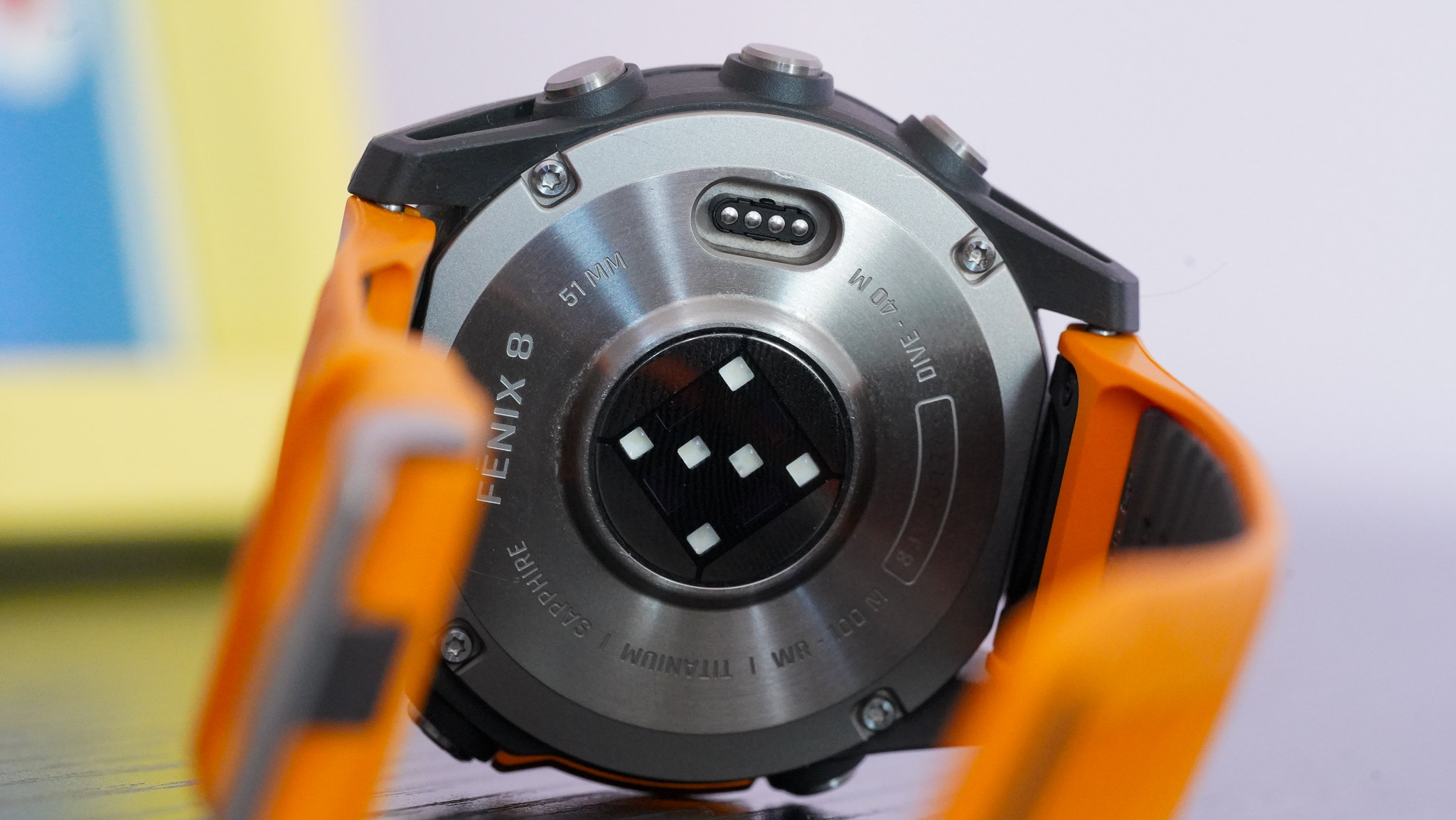
Biosensor and GPS
The Fenix 8 uses the same biosensor as its predecessor. However, the watch uses a new GPS chip, which enables it to use features such as Position Enhancement, which collects more data to help determine positioning after the exercise concludes.
Other features
The built-in physical LED flashlight is back! Garmin added this feature with the Fenix 7X, the largest Fenix at the time. Then, The Fenix 7 Pro introduced it in all sizes, which is the case here, too, with the Fenix 8.
A new addition is the speaker and microphone, which allows users to make and receive calls directly from the watch, use voice commands, and interact with voice assistants (like Siri or Google Assistant).
Health and fitness features
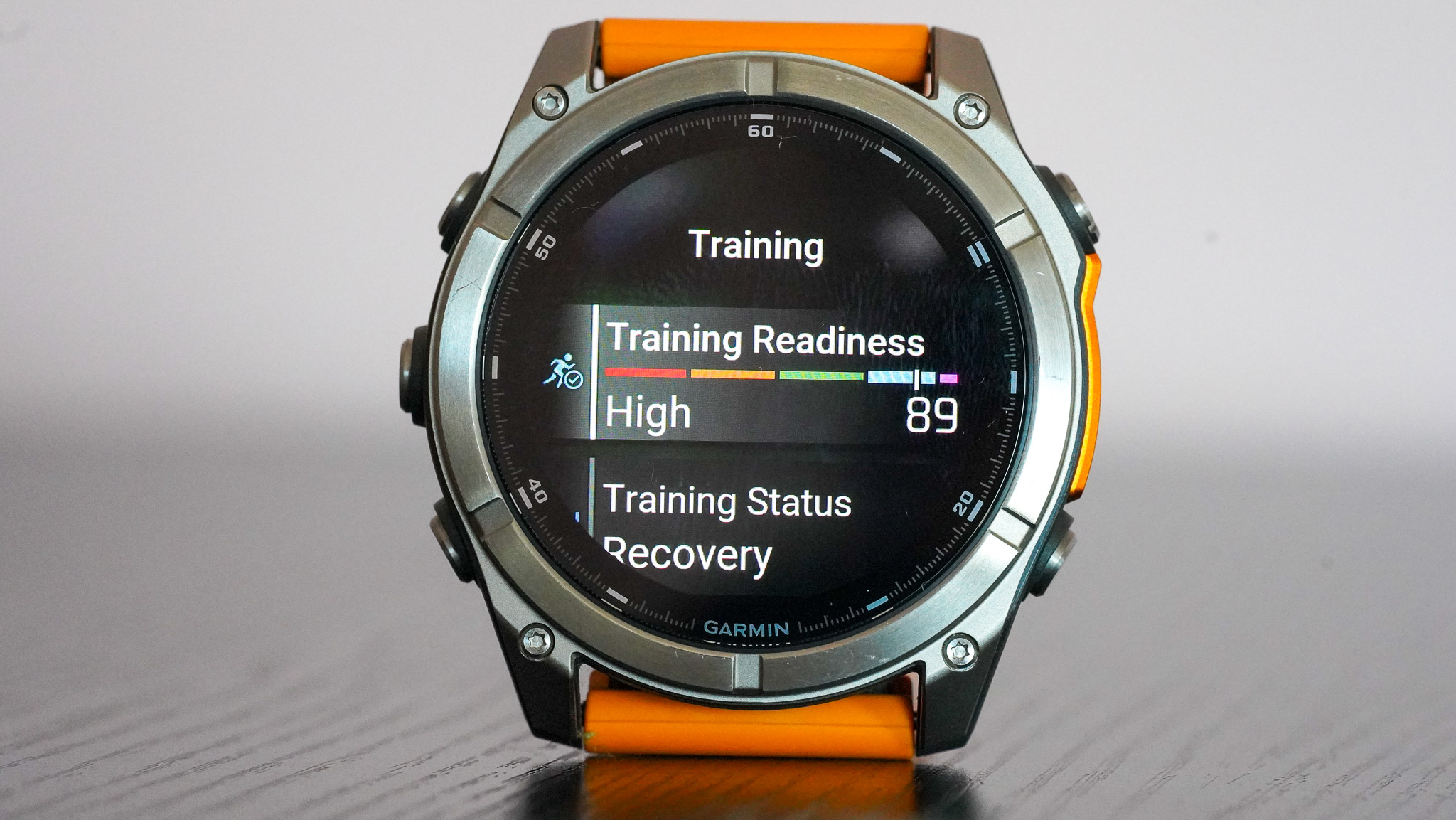
The Garmin Fenix 8 retains many of the core features from previous models, such as continuous heart rate monitoring using the Elevate Gen 5 sensor. This sensor is more accurate than its predecessor and provides comprehensive data such as heart rate variability, stress levels, and oxygen saturation (SpO2). These metrics contribute to Garmin’s overall health tracking, including its Body Battery feature, which estimates your energy levels throughout the day based on activity, sleep, and stress.
In terms of fitness tracking, the Fenix 8 offers detailed data for over 60 sports modes, ranging from running, swimming, and cycling to more niche activities like paddleboarding and surfing. Garmin has enhanced its multisport capabilities, allowing seamless transitions between activities in events like duathlons, triathlons, and more.
The Fenix 8 introduces an upgraded strength training mode, providing more detailed tracking of reps and form. The real-time stamina feature is also present, monitoring your stamina during long endurance activities. It offers insights into how much energy you have left, helping you manage your pace and avoid burnout.
One exciting addition is sport-specific workouts for athletes of all types, including trail runners, surfers, skiers, and more. This is a very important feature, especially for a company like Garmin. Many of us who like cardio exercise ignore the benefits of strength training, so Garmin's addition of this option is an important milestone in performance wearables.
Another new addition is the dive mode mentioned above, which supports scuba diving and free diving up to 40 meters. This makes the Fenix 8 suitable for underwater sports, providing essential metrics such as depth, dive time, and GPS-tracked entry and exit points.
Heart rate and GPS accuracy
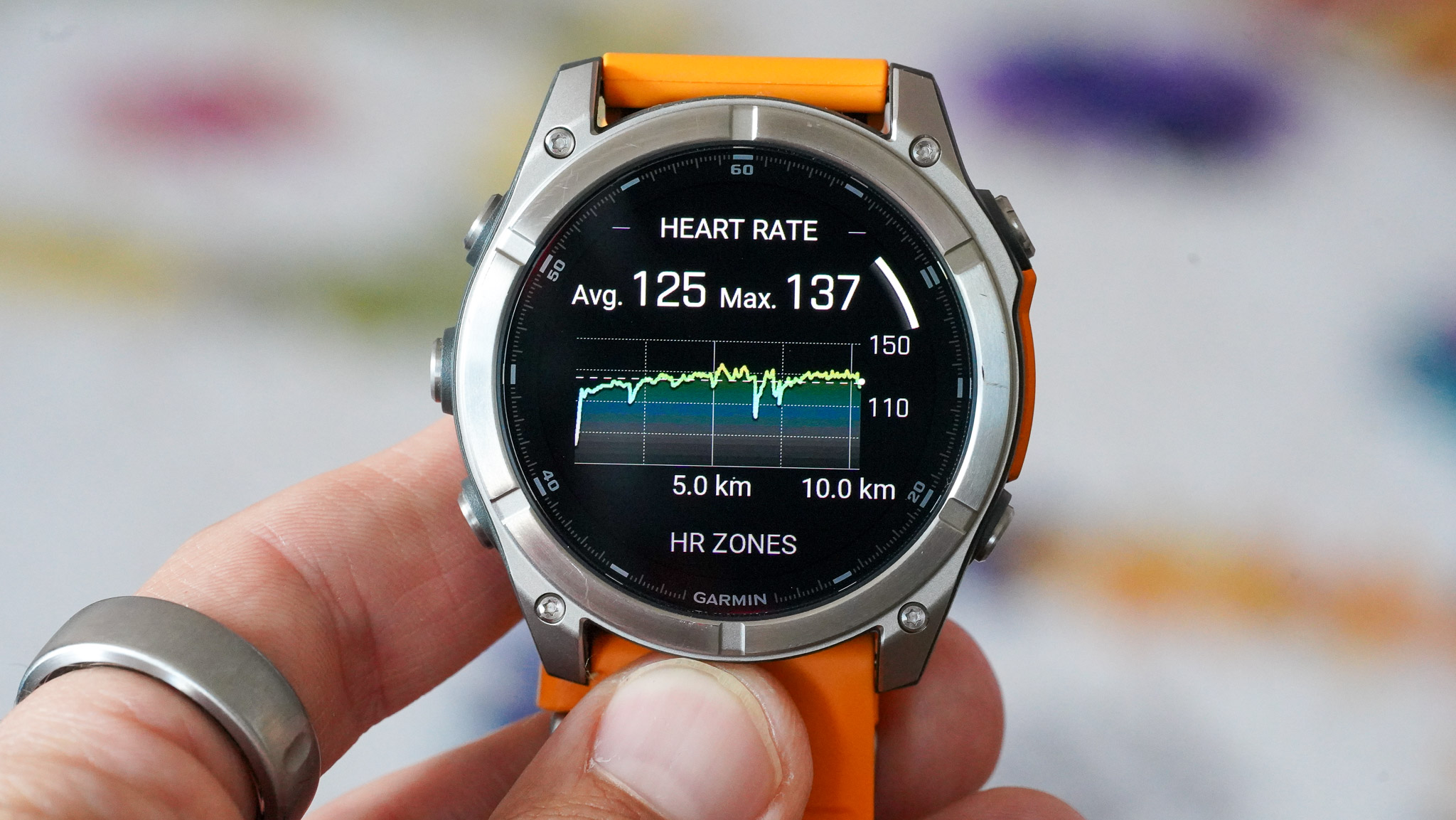
The heart rate tracking on the Garmin Fenix 8, powered by the Elevate sensor, is often used as a gold standard thanks to its accuracy, particularly during steady-state activities like running, cycling, and indoor workouts.
The Fenix 8 performs well in tracking heart rate, offering reliable data that closely matches chest strap monitors, especially during endurance activities. As always, like most wrist-based sensors, it can still struggle slightly with rapid heart rate changes during high-intensity or strength training, though these discrepancies are minimal.
Garmin has been steadily improving its algorithm to predict changes in heart rate better. The issue is that optical heart rate sensors (oHRS) such as Elevate must ‘see’ under the skin. This isn’t the case with heart rate monitors that use electrical sensors based on electrocardiography (ECG) to measure heart rate.
There can be many reasons why an oHRS might think a quick rise in heart rate is an anomaly – sweat or hair stuck between the sensor and the skin, the watch not sitting perfectly on the wrist, etc. – so it often assumes it’s a mistake and smooths it out, which is not ideal when those heart rate spikes are the result of the workout.
The Fenix 8 does better logging spikes when it knows they are to be expected, such as during HIIT workouts and sprint sessions, though.
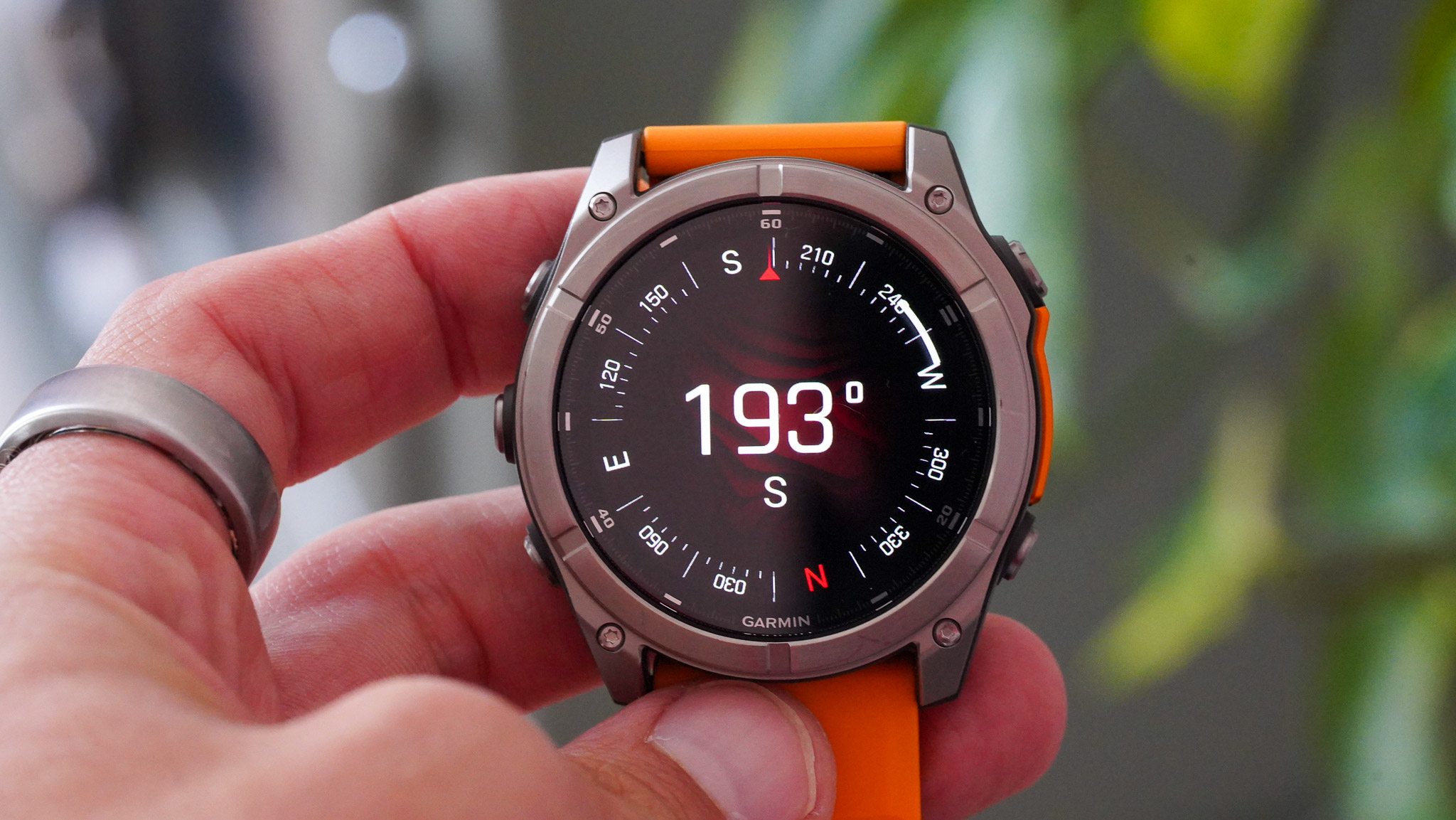
Regarding GPS accuracy, the Fenix 8 utilises a multi-band GNSS chipset, which significantly enhances its performance in tracking location even in challenging environments like dense forests or urban areas with tall buildings.
As such, the Fenix 8 provides exceptional GPS accuracy, locking onto signals faster and holding them more consistently than most competitors. The SatIQ technology further optimises GPS use by switching between different satellite modes to maintain accuracy while conserving battery.
I couldn’t find a way to trigger the Position Enhancement feature, even though it took the Fenix 8 longer to pick up the GPS signal than the Garmin Forerunner 965 I had on my other wrist. Garmin says the feature currently cannot be activated manually, which is a shame.
For a strange reason, the icon for the workout settings has been removed, so you just have to know to long press the middle button to summon them. There is an easy fix to this, and I assume Garmin might reintroduce it via a future firmware update.
Maps
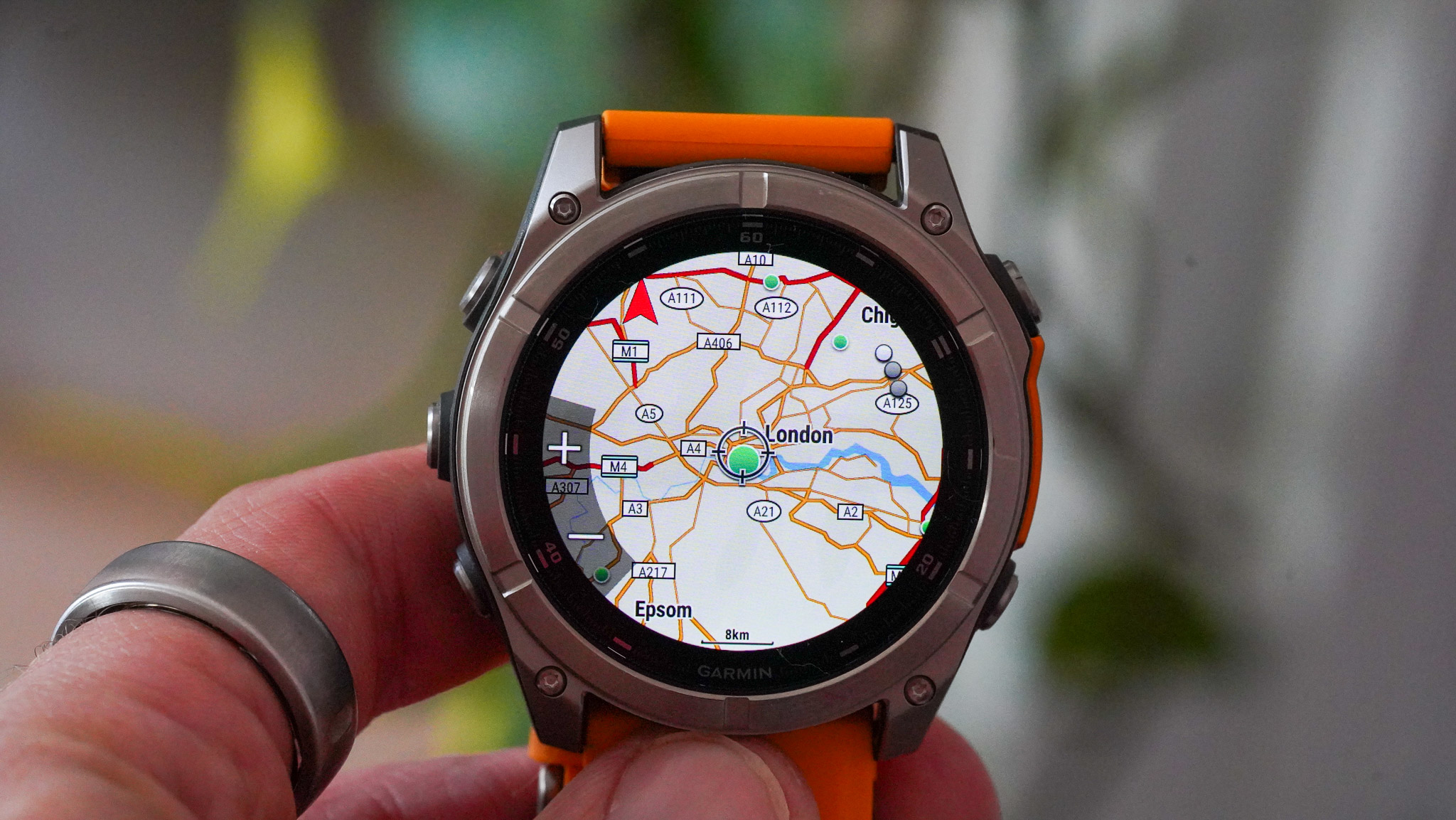
The mapping feature on the Garmin Fenix 8 has seen significant improvements, especially with the introduction of the AMOLED screen option.
Say what you might about AMOLED, it enhances the visual clarity of maps, offering vibrant colours and sharp details, making topographic maps, routes, and trails much easier to read compared to the older MIP displays.
The maps look brilliant, with excellent detail. Plus, the dynamic round-trip routing feature provides route suggestions based on your location and distance traveled, improving the experience for runners and hikers.
Maps have been moved from under the workout section to make them easier to find. Outdoor Maps+ is available on the Fenix 8, a paid subscription service Garmin that provides users with the most up-to-date Garmin U.S. mapping. I haven’t tried this feature so I can’t comment on it, but if you’re in the US and spend a lot of time in areas with poor smartphone reception, it’s a service you might want to consider subscribing to.
You get all the cool navigation functionality you expect on a Garmin outdoor watch, including Courses (these need to be downloaded via the Connect app), POI navigation, Back to Start, Round-trip course, Back to Start, and so on. And since the maps look much better on the AMOLED screen, navigation feels more intuitive than before.
Battery life
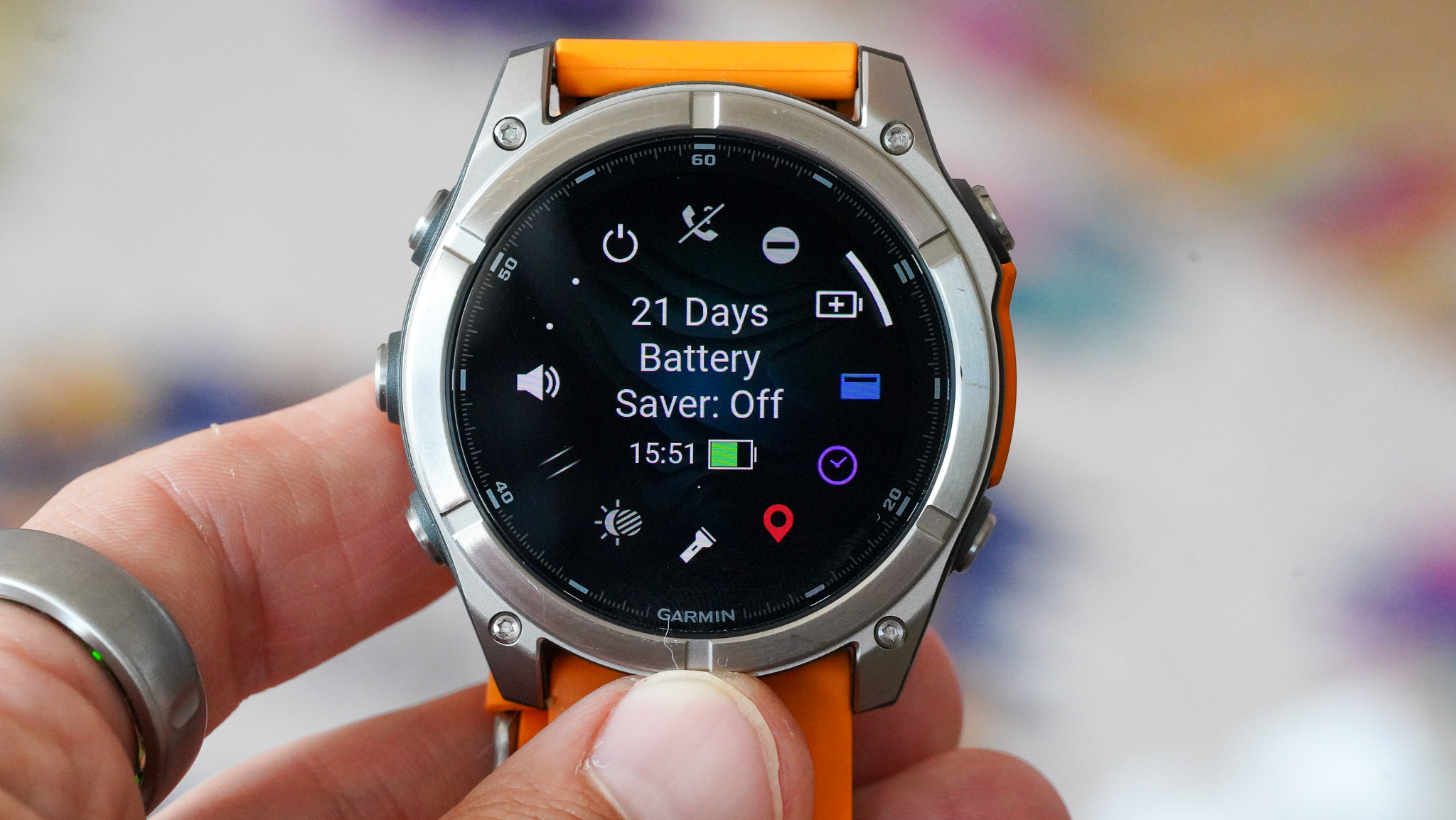
The battery life of the Garmin Fenix 8 is one of its standout features, varying significantly depending on the display type (AMOLED vs. MIP with solar charging), usage scenarios, and GPS modes.
The AMOLED models of the Fenix 8 provide a slightly shorter battery life than the MIP (memory-in-pixel) models, which prioritise power efficiency and feature solar-charging. In smartwatch mode, the AMOLED version lasts up to 29 days, which is impressive for an AMOLED display, but does fall short of the MIP solar-charging models, which can last up to 48 days in smartwatch mode with solar assistance.
Battery life in GPS mode is another major factor. In standard GPS mode, the Fenix 8 can last between 70 to 120 hours, depending on whether you're using the AMOLED or MIP model. MIP versions have the added benefit of solar charging (via Garmin’s Power Glass technology), which can extend the battery life during outdoor activities by absorbing sunlight.
The Fenix 8 also features SatIQ technology, which isn’t new but works just as well as before. SatIQ dynamically adjusts GPS settings to balance accuracy and battery life.
When in multi-band GNSS mode, which provides the highest level of location precision, battery life is reduced but still remains impressive at around 20 to 40 hours, depending on model and usage intensity.
In more power-saving modes, such as Expedition GPS mode, the battery life can extend to several weeks. For example, Expedition mode offers up to 65 days on the AMOLED version and up to 100+ days with the MIP solar model. This makes the Fenix 8 a great choice for multi-day trekking, mountaineering, or long-distance adventures.
During testing, using the standard GPS mode for up to 7-8 hours a week, I didn’t have to charge the watch once in the two weeks. I used the largest Fenix 8 model with the AMOLED screen, yet the battery life was absolutely mind-blowing.
Verdict
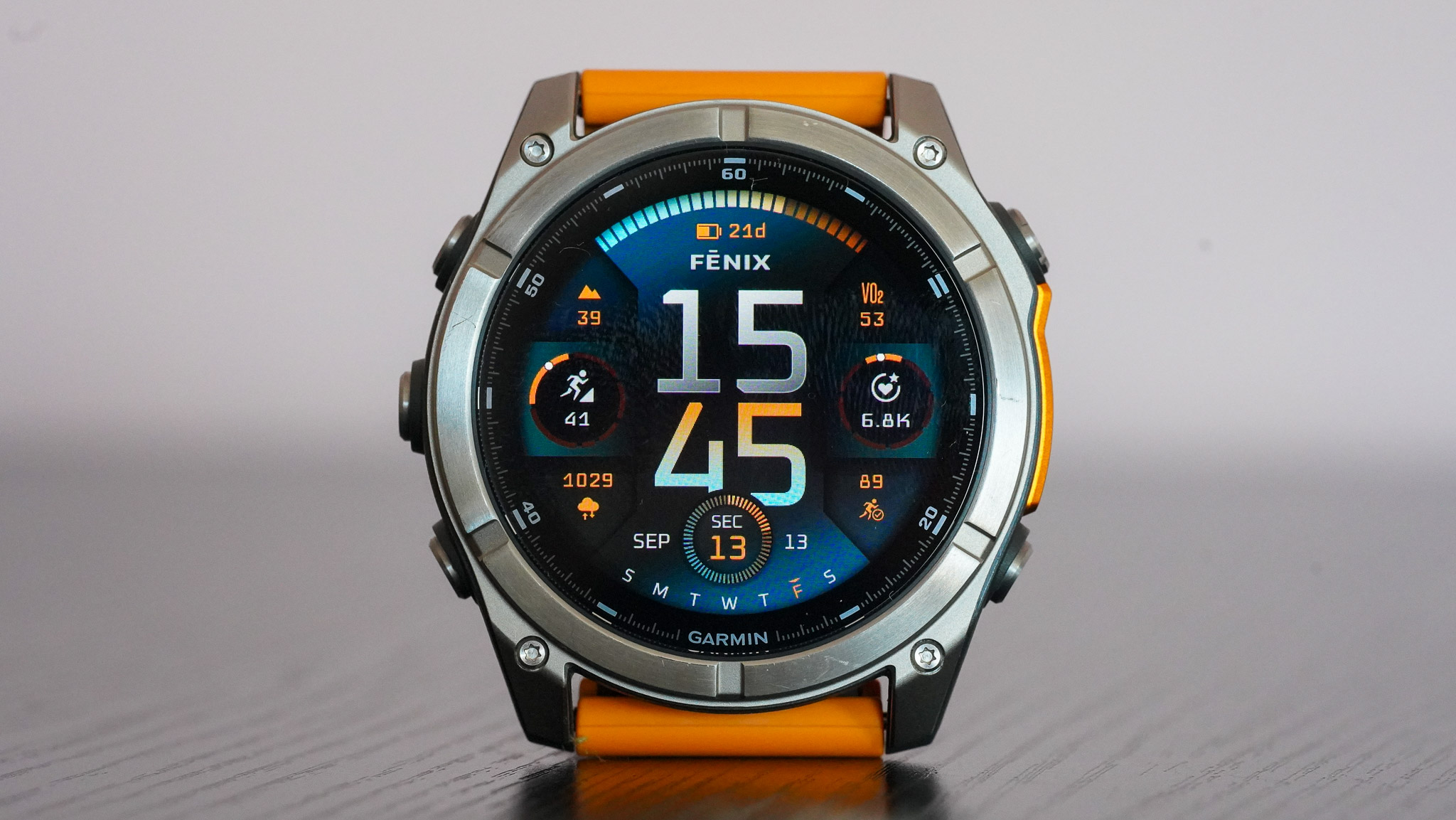
How can you not get excited over an AMOLED Fenix? The Garmin Fenix 8 builds on the very strong foundation laid by its illustrious predecessors, and adds some nifty upgrades. Who knows which of these will make their way to older models and how long you have to wait until they are available?
There is an argument that even when the new features eventually trickle down to older models, they won’t look as good on a MIP screen. Plus, the Fenix 8’s improved GPS chip won’t ever be available on older Fenix watches.
It’s a premium smartwatch with a premium price tag, which isn’t a surprise to anyone familiar with the franchise (I hope). Considering how durable the watches are and how much Garmin supports its wearables even a decade later, it’s hard not to reach for the wallet immediately.
That said, if you have a Fenix 6, Fenix 7 or Fenix 7 Pro, I’m not sure you need an upgrade unless you’re A) desperate for an AMOLED screen and B) live in an area where the GPS signal/accuracy is terrible.
Garmin has only itself to blame for making such long-lasting wearables. This is obviously a joke, as I would never slag off a tech company for making durable products that retain their value.
For the same reason, I know many people are happy to pay the higher price for a Fenix, and I don’t blame them. With the Fenix 8, you get a watch that will have a battery life of over two weeks in 7-8 years. Not to mention the countless (free) software updates the watch will receive over its lifetime.
Also consider
Garmin Epix Gen 2 Pro: A close alternative to the Fenix 8, with an emphasis on a vibrant AMOLED display and slightly improved smart features.
Apple Watch Ultra 2: Focuses on premium fitness and outdoor features combined with a more polished user experience and deeper app integration, though with a much shorter battery life.
Coros Vertix 2: Offers ultra-long battery life, robust GPS accuracy, and high-end tracking features, making it a strong, affordable alternative for adventure enthusiasts.
Polar Grit X Pro: Tailored for endurance athletes, offering excellent navigation and fitness tracking, focusing on long-distance activities.
Suunto 9 Peak Pro: Lightweight and compact with strong battery life and advanced sport modes, designed for outdoor athletes prioritising durability.
Garmin Forerunner 965: A more affordable option with excellent multisport tracking, similar to the Fenix 8 but lighter and with fewer premium materials.







